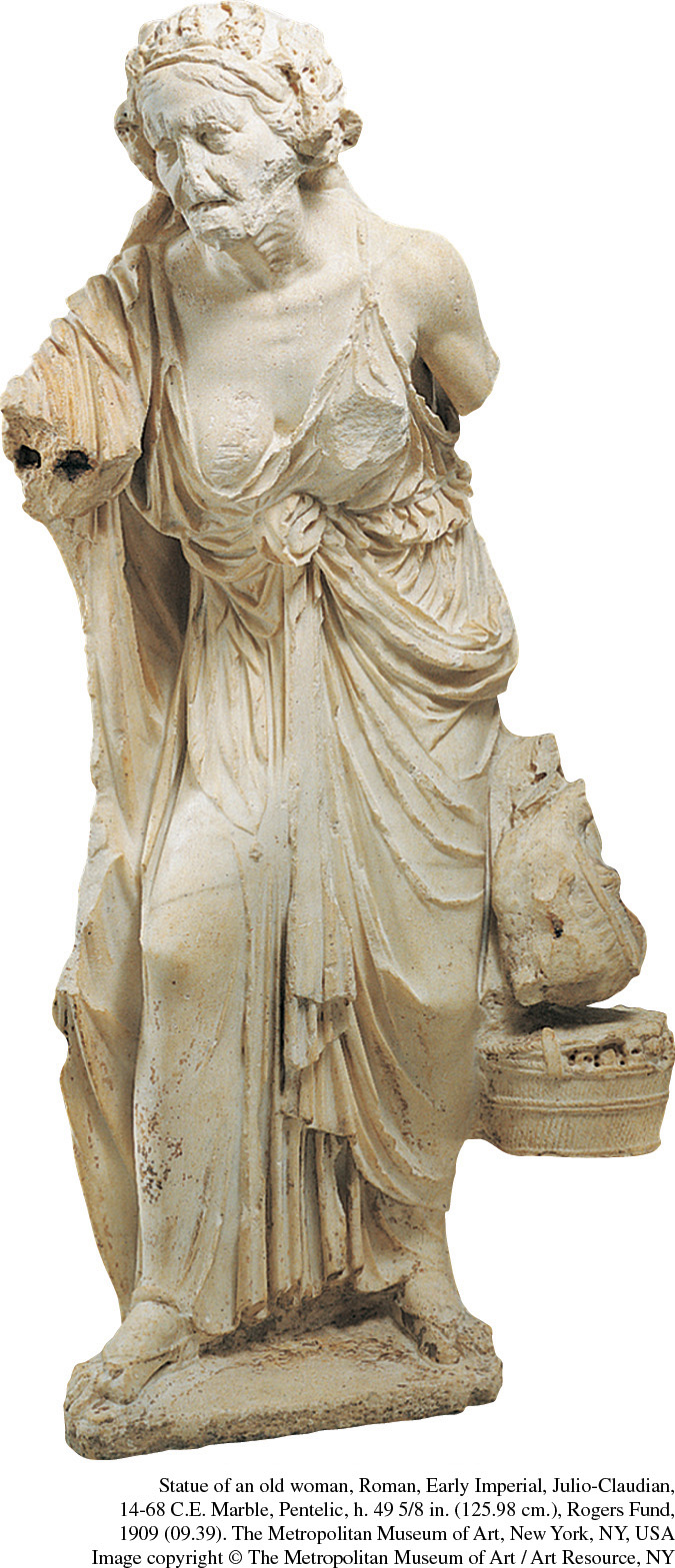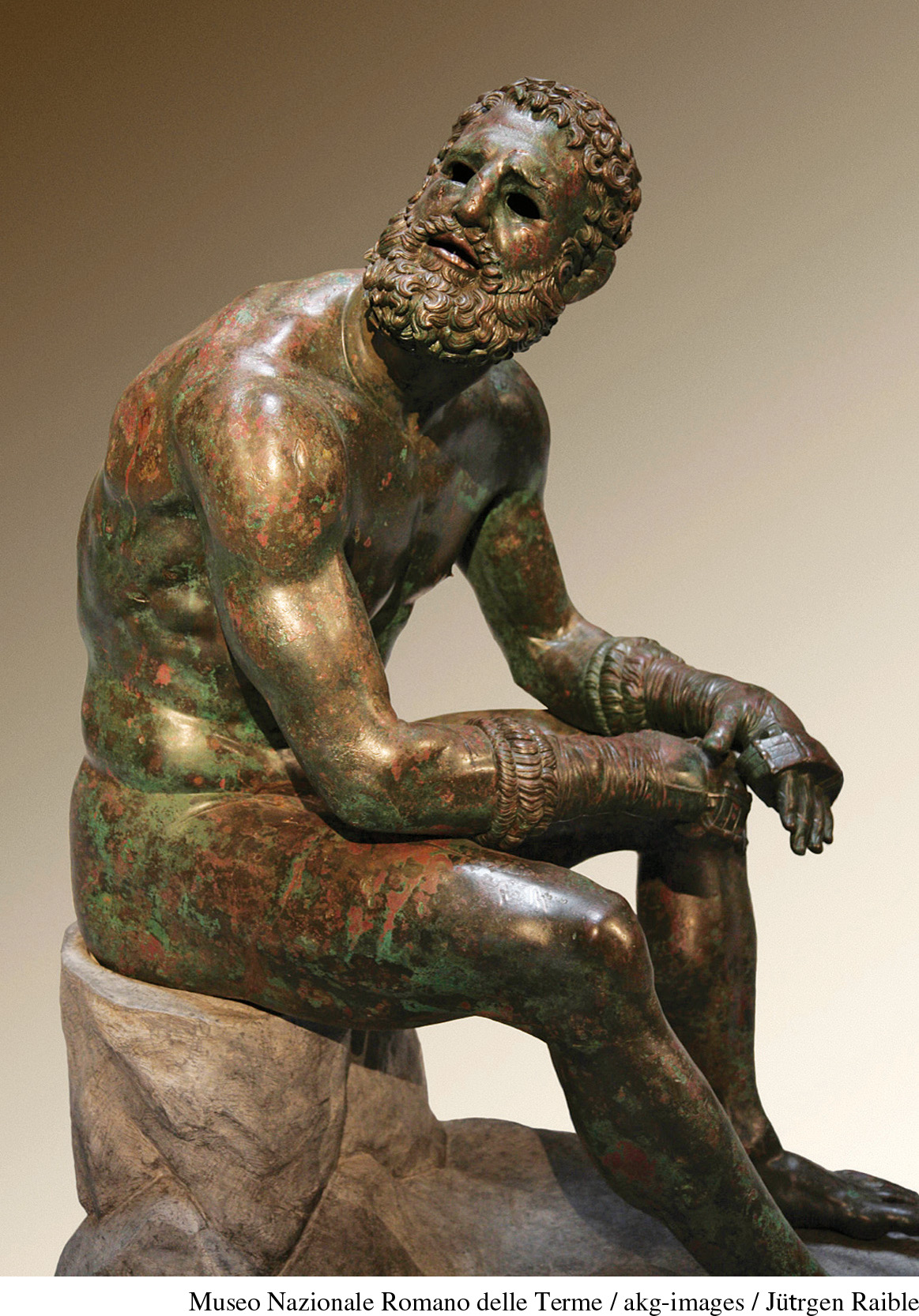Seeing History: Showing Struggle and Pain in Hellenistic Sculpture
Printed Page 141
Important Events

The sculpture of the classical era in ancient Greece was famous for its idealized portrayals of beautiful women and handsome men looking physically fit and emotionally fulfilled. Even the depictions of Greek warriors in battle generally showed them as heroic and in control, even if they were being wounded or killed in action. Foreign enemies could be portrayed as less noble, but sculptors had a pronounced tendency to show their own people as noble in their beauty and self-control. This form of idealizing representation never disappeared from Greek art, but in the Hellenistic period a new artistic trend developed that produced a very different effect.
Hellenistic sculptors began to create works of art that depicted people not as always victorious and successful but instead as troubled, worried, and damaged. The statue of an older woman shown here, for example, presents its subject as stooped in her posture, so disheveled in her clothing that one breast is almost exposed, carrying an apparently heavy load of food that she is either bringing home or trying to sell in the market, and expressing pain and distress on her face. This marble statue seems to be a later copy of an earlier one, which may have originally been made from bronze. Its details reveal the woman’s emotional state and her pain in struggling to exist in a harsh world.
The seated statue in bronze represents a male athlete, a boxer who appears to be trying to recover after a match. Greek boxing was brutally tough; take note of the hard ridges across his fingers from the leather gloves covering his forearms. They functioned as the equivalent of modern “brass knuckles.” Fighters wore such equipment to pummel their opponents. It is no surprise, then, that the figure looks very tired and even bewildered. Did he lose the fight? Is he listening in pain to his manager or trainer about how to do a better job beating up his next foe without getting his own face smashed in? Is he thinking about continuing or retiring, do you think?
Both these statues seem to express a level of emotion stemming from struggle and suffering that is something new in Hellenistic sculpture. Obviously, people before the Hellenistic period also experienced difficult challenges in their lives, and classical literature is certainly full of stories of painful tragedies and personal disasters. Nevertheless, this form of art does seem to develop a novel dimension in its realistic expressiveness over the centuries following the upheavals of the fourth century B.C.E.
Question to Consider
Why do you think Hellenistic sculptors produced such works, and why did their audiences appreciate this approach to depicting human beings experiencing pain and trouble in life?